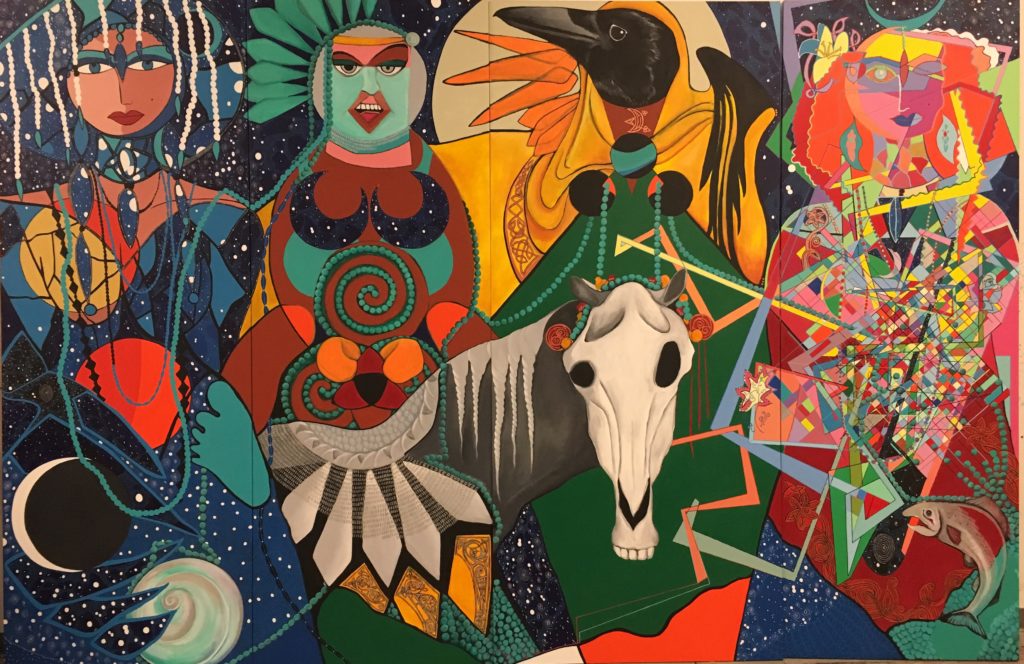
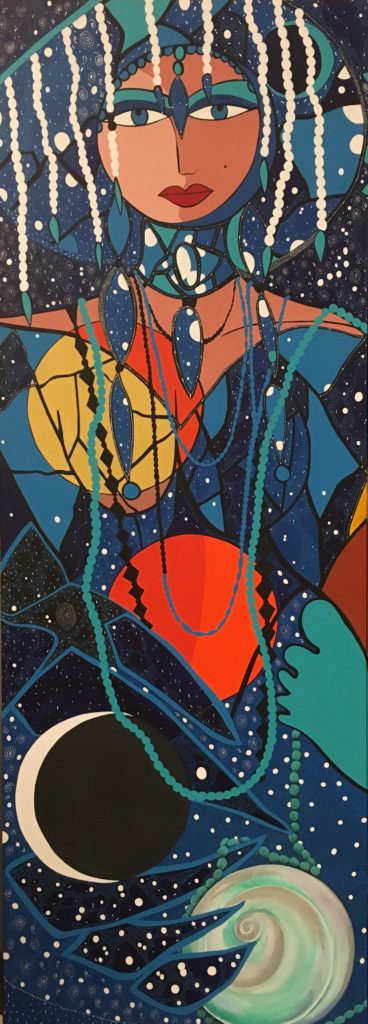
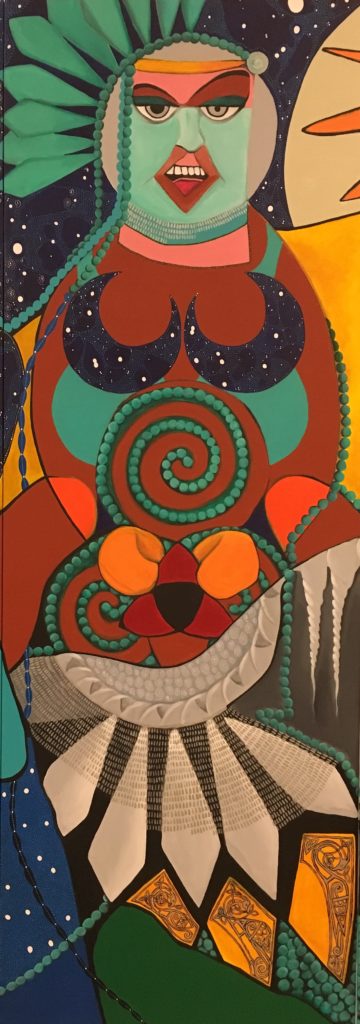
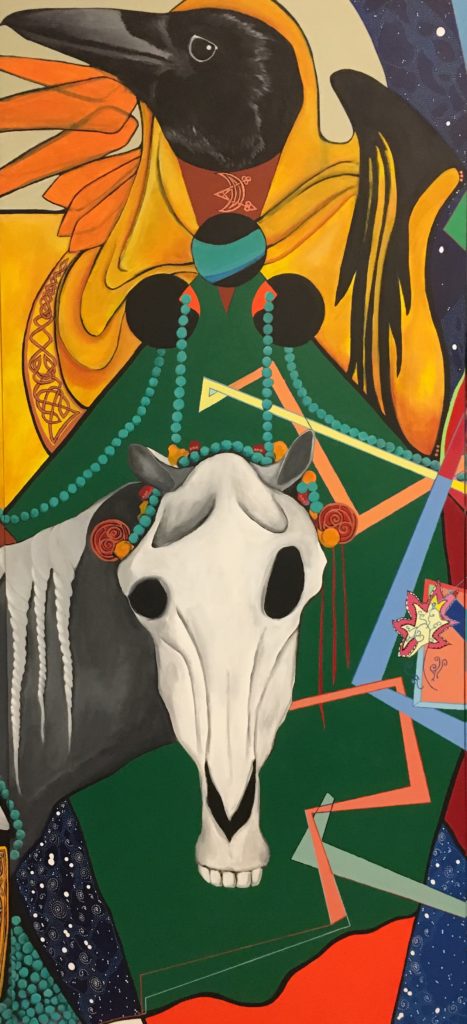
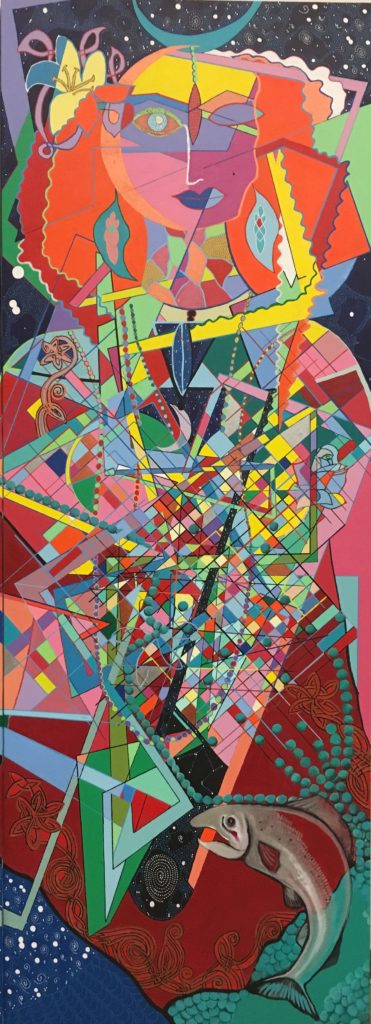
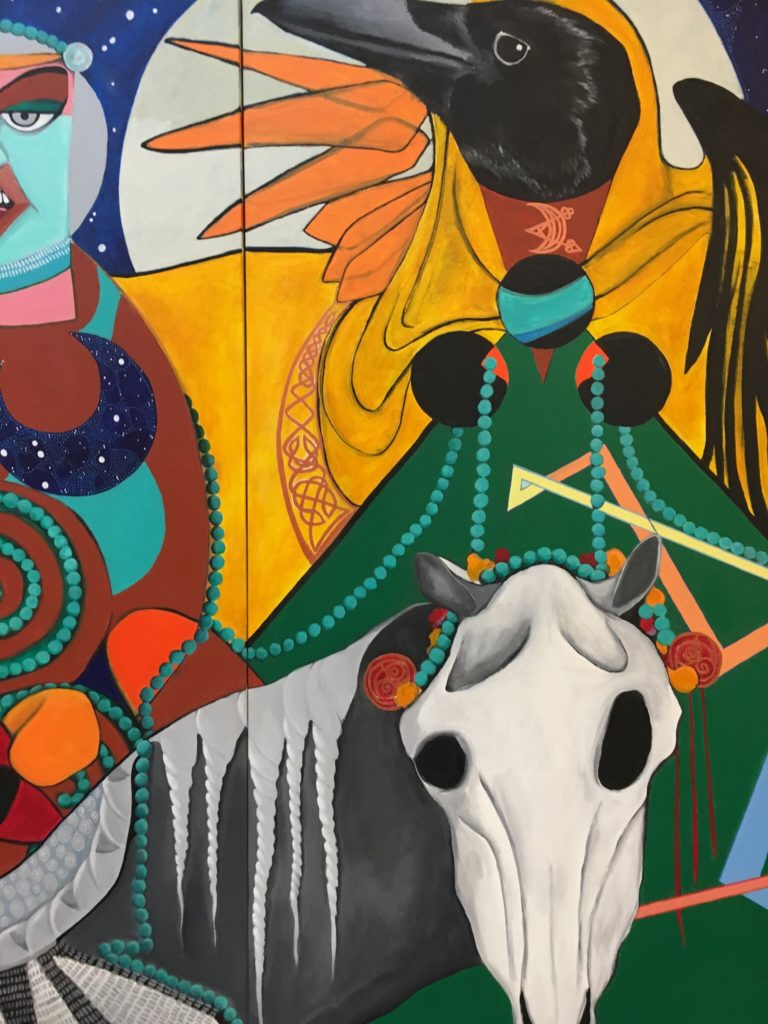
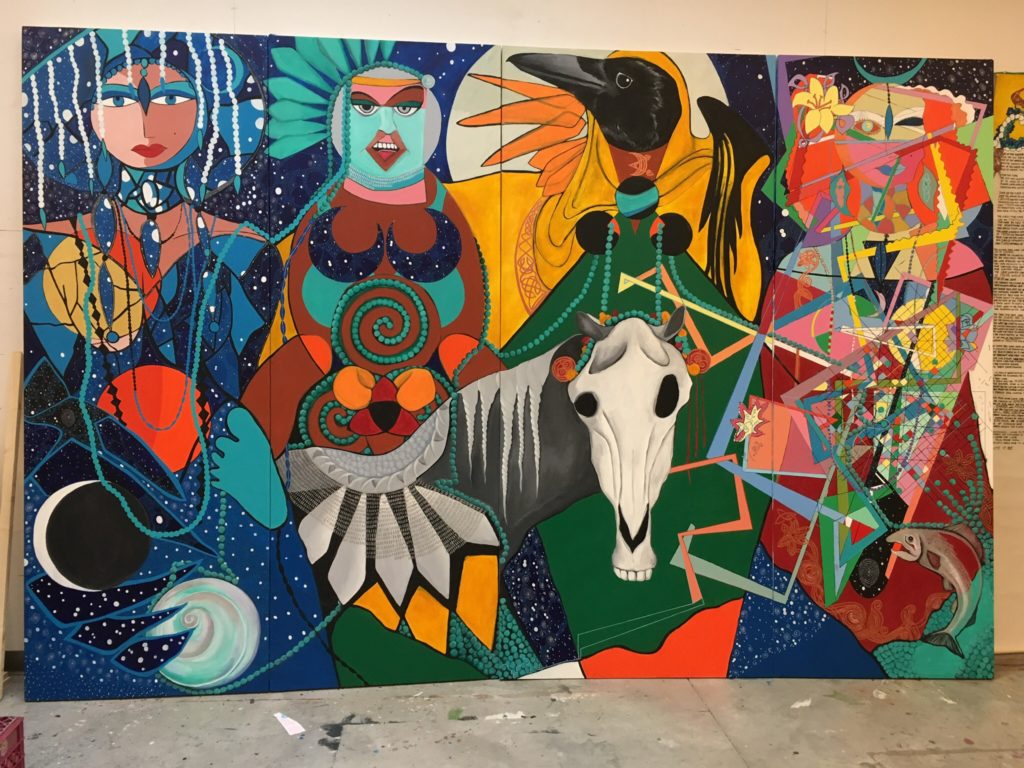
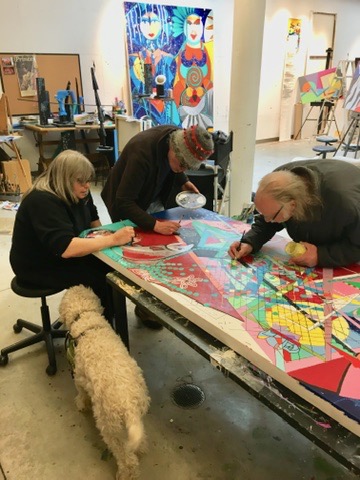
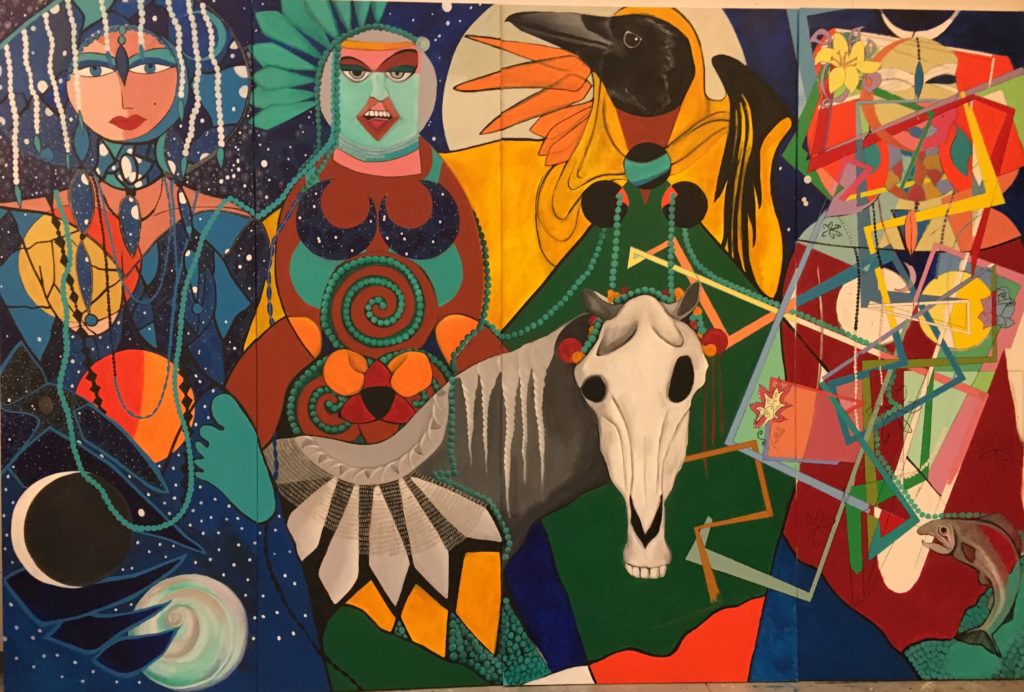
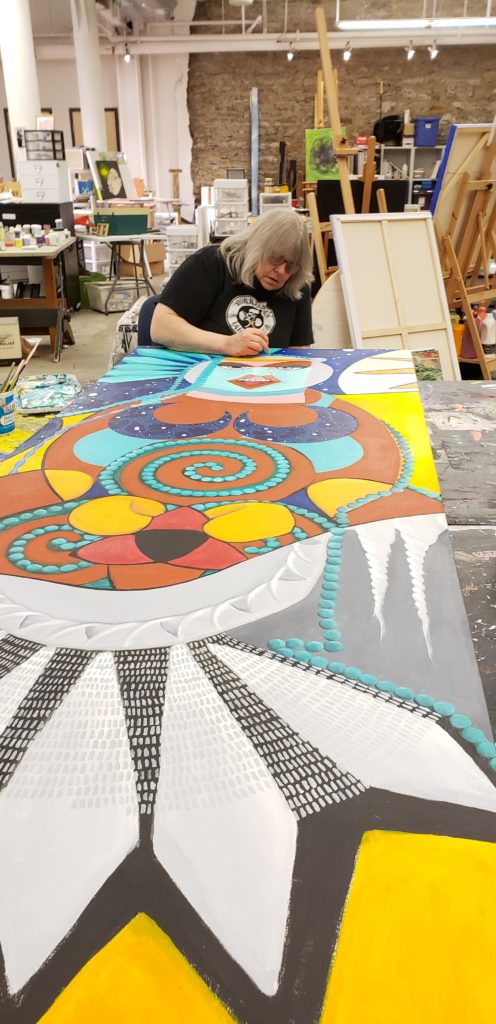
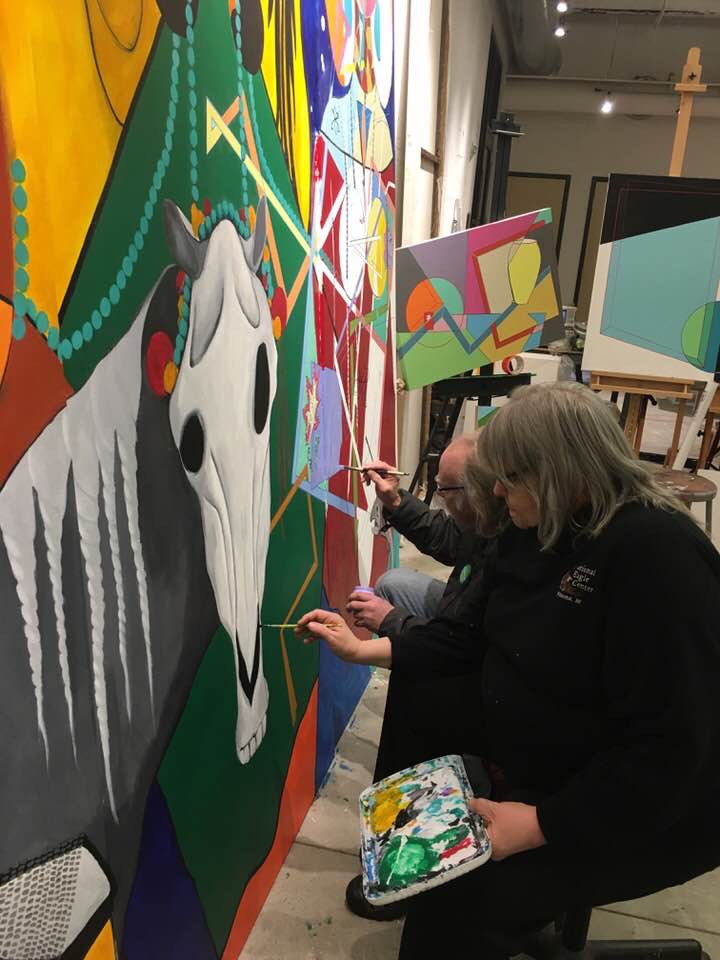
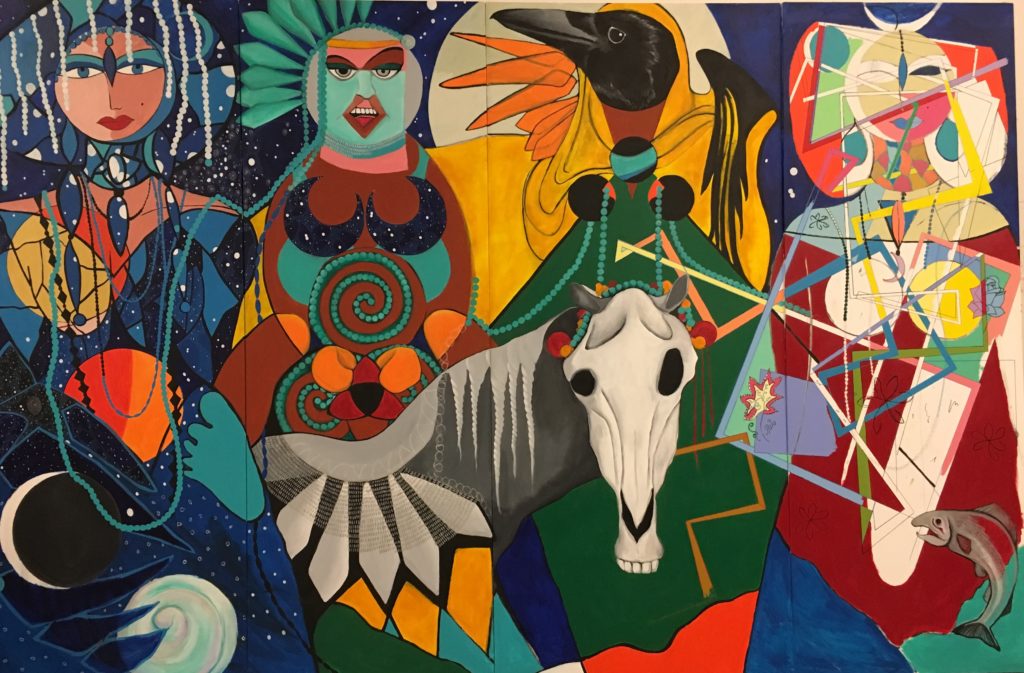
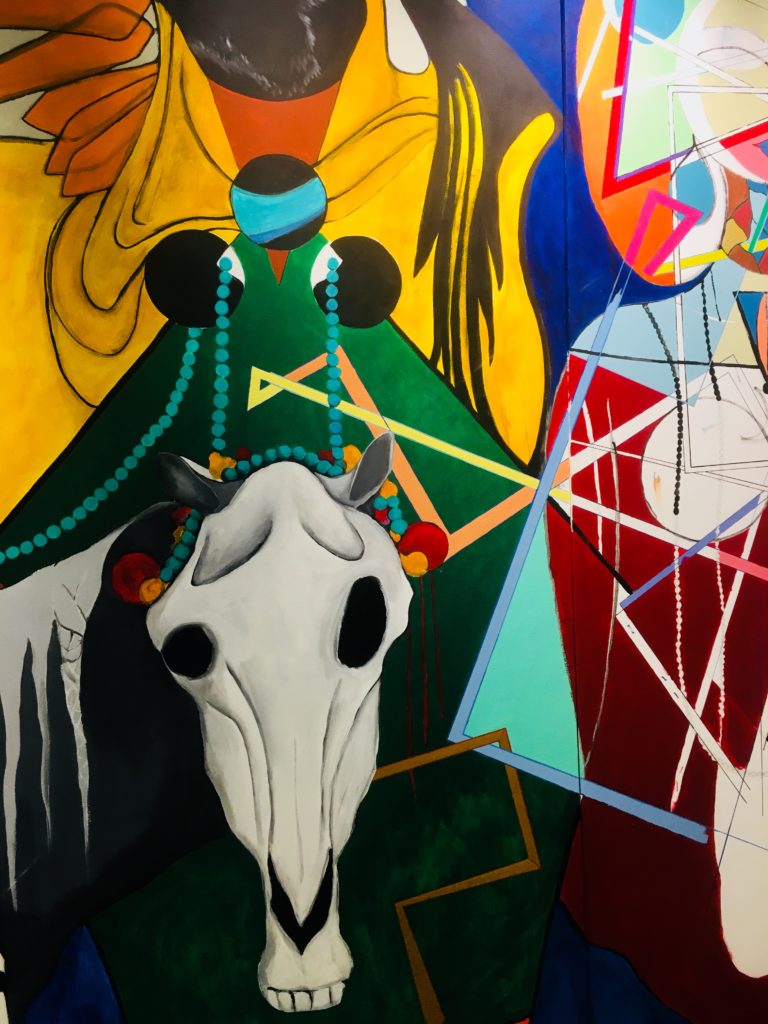
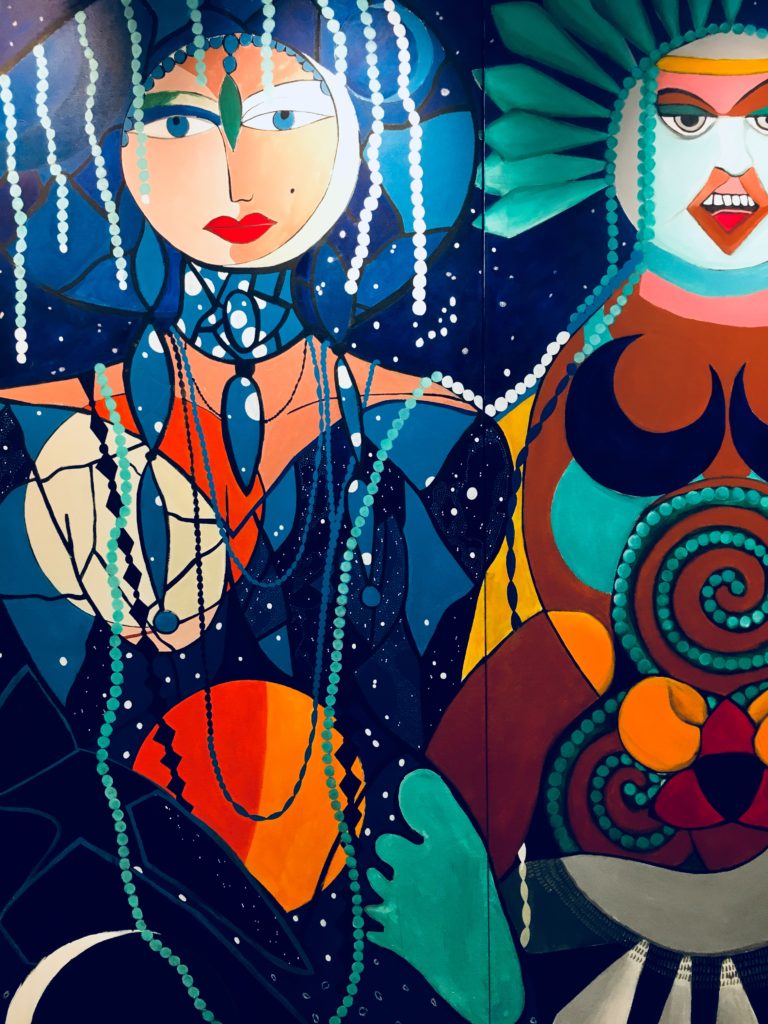
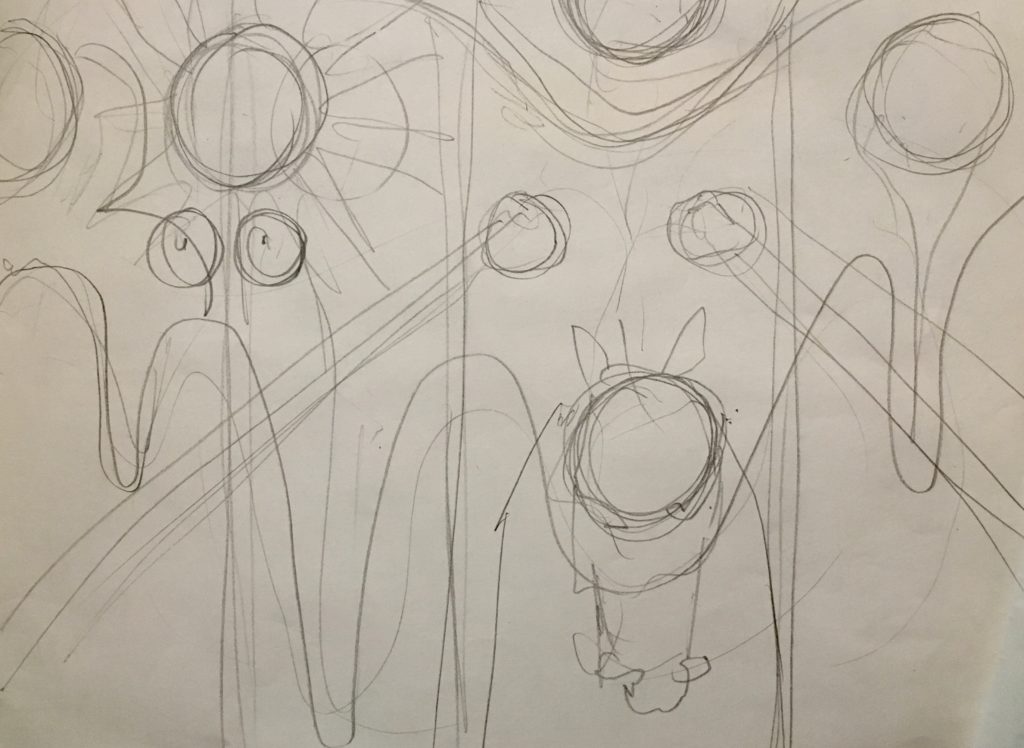
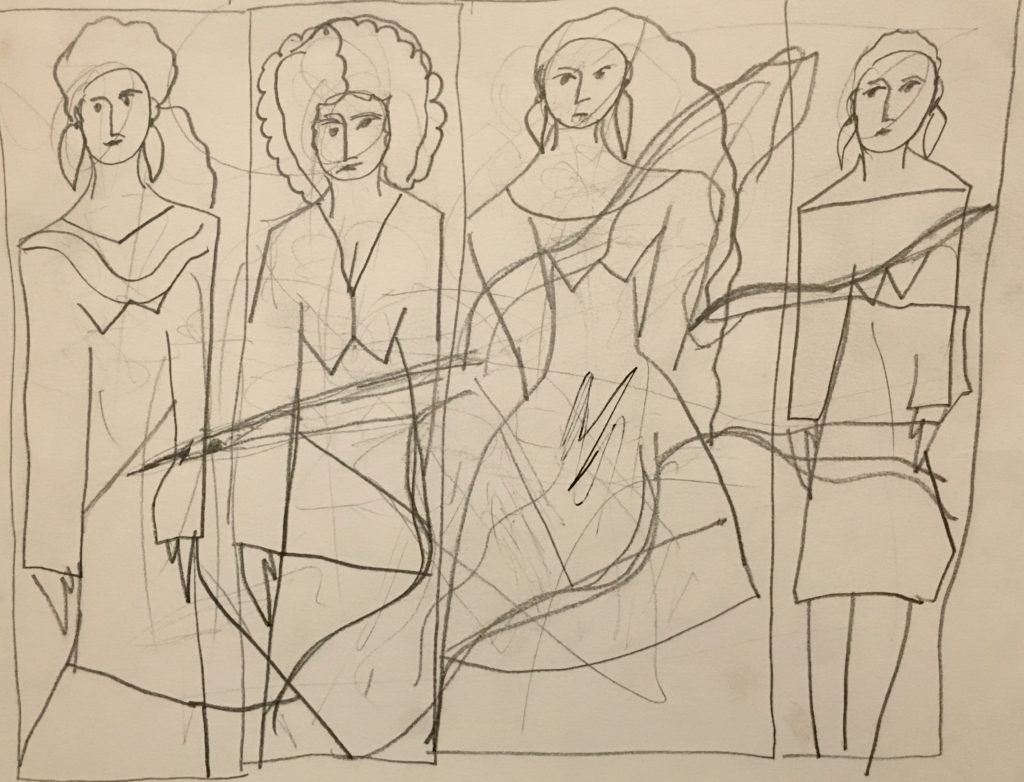
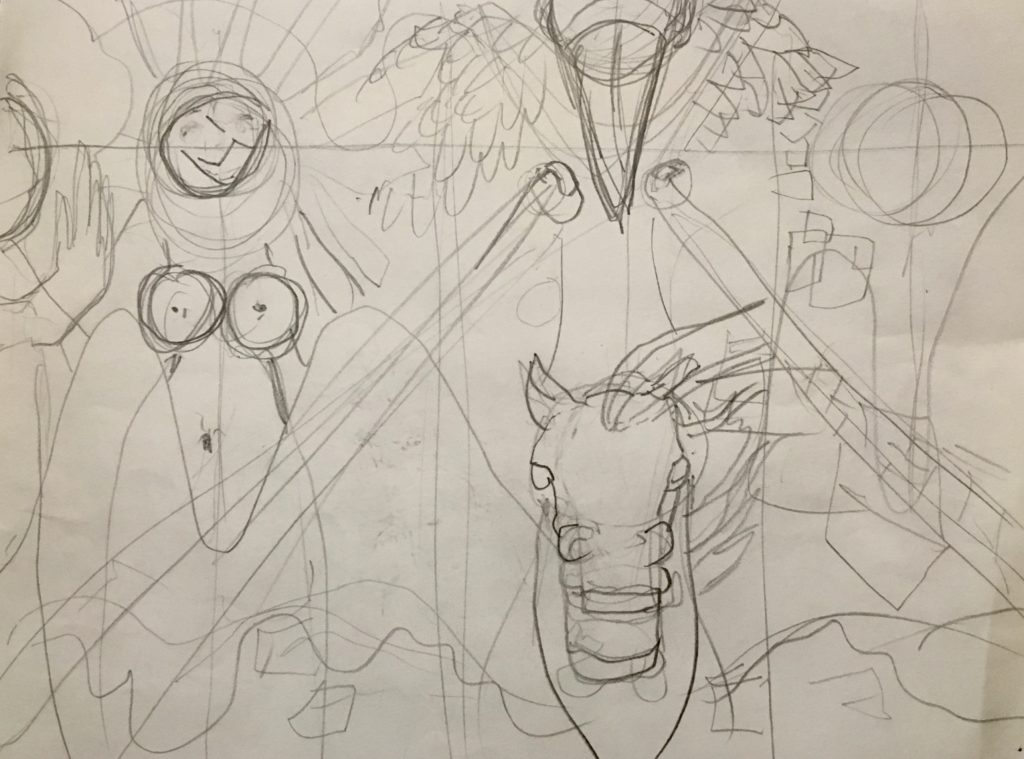
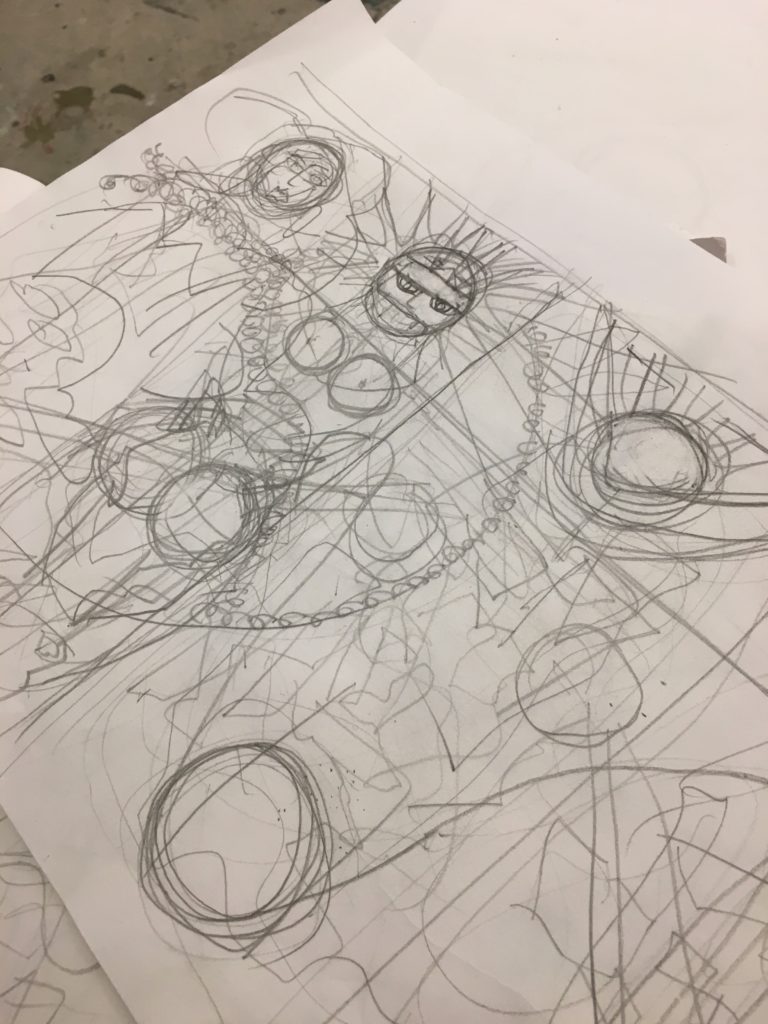


“Morghan” By Dan McCall
When I saw this, I immediately picked up on the Celtic and other symbolism but I thought it had been, perhaps, done by your daughter.
This is an eclectic mix of symbolism – Celtic and pre-Celtic. The Celtic links into mythology from the Iron Age (about 500BC to 500AD) and the pre-Celtic to the Neolithic and Bronze Ages in Ireland from about 2500BC to about 1500BC.
I wouldn’t title this image the Morghan – I don’t recognise that word. What this image is all about is the MORRIGAN.
This is complex stuff and I don’t pretend to be an expert in Irish mythology but I know enough to say something about it.
The Morrigan (the name is taken from the Irish “Mor-Rioghain” meaning approximately Phantom Queen and pronounced “MORREAN” was a Celtic goddess associated with death and destruction. Later the single Queen transformed into a trio of female goddesses called the MORRIGAN, all associated with death, destruction and sorrow.
If you recall Shakespeare’s play Macbeth (based in Scotland) it more or less starts with 3 old hags sitting round a fire and a cauldron creating a spell that will bring death and disaster to many of the people in the play. Shakespeare had clearly heard of the Morrigan – for that is what the 3 old women were. The Morrigan could take the form of various things such as old women or birds.
So, I see the three female figures at the top/back of the image as the Morrigan with the image of a crow or raven between them.
The interesting thing about that bird is that it was believed that the Morrigan could take the form of a raven or crow that appeared above battlefields and it was also believed that the Morrigan would try to capture the souls of the dead warriors as they passed to the afterlife. There are different versions of this. See image below.
I have this statue in my study. It is of the most famous (mythological) Celtic warrior of all, Cuchulainn. If you want to find out about him and his exploits Google his name. The statue shows him dying or dead after holding off his enemies. So as not to fall and be dishonoured, he tied himself to a pillar stone and his enemies were afraid to come near him, unsure if he was still alive. Then a raven/crow alighted on his shoulder – the Morrigan.
Another very obvious Celtic symbol in the image is the leaping salmon (bottom right) – a famous story from the Celtic mythological tales centres on a salmon that had within it all knowledge. It was caught by a young boy and while cooking it, his thumb got burnt testing the food and in his touch of the salmon, all knowledge passed to him. He grew up to be a famous warrior.
I don’t know for sure what is intended by the skeletal horse (head) but it possibly relates to horse skeletons from the Iron Age that were excavated by archaeologists in the British Isles. The Celts were famous for their use of war chariots and archaeological excavations have produced warrior burials that were accompanied by a chariot and two horses linked to the chariot – obviously, skeletal when the archaeologists dug them up. Perhaps, the horse head image has been taken from those excavated Celtic chariot horses?
If you look at the second female figure you will see a triple spiral. This is a famous image but it has nothing to do with the Celts – it comes from a much earlier time in Ireland – the Neolithic period about 2500BC. These people were the first farmers and crop growers in Ireland. Some of their tombs are absolutely magnificent – such as Newgrange in County Meath. By a curious coincidence, Newgrange features in that Joe Biden video clip I sent you on 4 October! But look at the image below – taken in the central burial chamber of that extraordinary burial mound. It shows the triple spiral that appears on the second woman’s dress. But, as I said, that image has nothing to do with the warrior Celts and is separated in time from them by close on 2000 years!
A photograph of the triple spiral from the central burial chamber at Newgrange.
Now look again at the image of that second female. On her chest are two semi-circular moons. These images are often found in heraldic imagery in the Middle Ages in Europe (including Ireland). That period ran from approximately 1200 to approximately 1550 or so. Leading families adopted coats of arms for themselves. The McCall family (from central County Tyrone) appear to have acquire heraldic imagery before they lost influence and power and eventually ended up (by about 1700-1800) as little better than landless labourers. The photograph below is accepted as the heraldic device of the McCall from that time (about 1500-1600) when they did have power and influence. It hangs on the wall of my study.
However, like the Scottish tartan kilt, there is more than a little doubt about the authenticity of these images. Nevertheless, many families in Ireland are proud to have a small shield in their homes carrying the heraldic imagery believed to be connected to their families.
The double crescents on the McCall coat of arms are essentially the same as the two crescents shown on the front of the second female in the image.
But another explanation is also possible. And this explanation shows how even more complicated the image is. During the Bronze Age in Ireland (approximately 1500BC to approximately 500BC), gold was mined and much of it was made into beautiful personal jewellery including semi-circular gold neck rings very similar in shape to the two crescents on that woman and it could be that the artist intended the crescent image to represent, not heraldic imagery, but Bronze Age personal neck ornaments! Although only one would have been worn around the neck at the one time.
So, your image appears to draw inspiration from an eclectic mix of periods in Ireland – the Neolithic (the spirals); the Bronze Age (the gold neck decorations); the Iron Age (the Morrigan, the salmon and the possible chariot horse) and – possibly – from the Middle Ages (the heraldic crescent moons).
Newgrange Neolithic Burial Mound, County Meath, Ireland
https://www.youtube.com/embed/fswqIBBmvuU
Built about 3200-3000BC – use concluded about 2000BC. Newgrange is 500 years older than Stonehenge and the Great Pyramid at Giza in Egypt. It is almost certainly the most iconic Neolithic site in Europe. The triple spirals can be found in the central burial chamber and on large retaining stones at the entrance.
The triple spirals and the entrance to the burial mound. Astonishingly, the builders arranged the construction to include a light box above the main entrance. It is constructed so that the first rays of the rising sun at dawn on 21 December (the winter solstice) shine into that box and travel along the path to the central burial chamber (where another large carved triple spiral can be found) and lights up the whole of the central chamber for several minutes. It is assumed but can’t be proved that for these people the December solstice had significance for rebirth and the turn of the year and the sowing of crops.
A large retaining stone at Newgrange with more triple spirals and other incised rock-cut symbols.
Newgrange late 1800s … but the light box had not then been discovered nor had it been discovered in the early years of the 20th century – see photo below.
Newgrange, early 1900s.
Early Bronze Age lunula from County Tyrone, Ireland, c2000BC
A Late Bronze Age gold collar from Gleninsheen, Co. Clare, it dates from c. 900-700 BC
Macbeth
ACT I
SCENE I. A desert place.
Thunder and lightning. Enter three Witches
First Witch
When shall we three meet again
In thunder, lightning, or in rain?
Second Witch
When the hurlyburly’s done,
When the battle’s lost and won.
Third Witch
That will be ere the set of sun.
First Witch
Where the place?
Second Witch
Upon the heath.
Third Witch
There to meet with Macbeth.
ALL
Fair is foul, and foul is fair:
Hover through the fog and filthy air.
Shakespeare was English and wrote the play Macbeth in 1606. But he drew upon Celtic mythology to open his play. He describes the three women as witches but it is entirely clear that he has taken the Celtic Morrigan as his source: the three-in-one phenomenon with references to battlefields, disaster, sorrow and in-air flight.
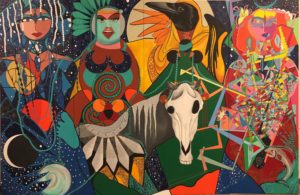
This is So cool !!!!
So how can I contact you guys?